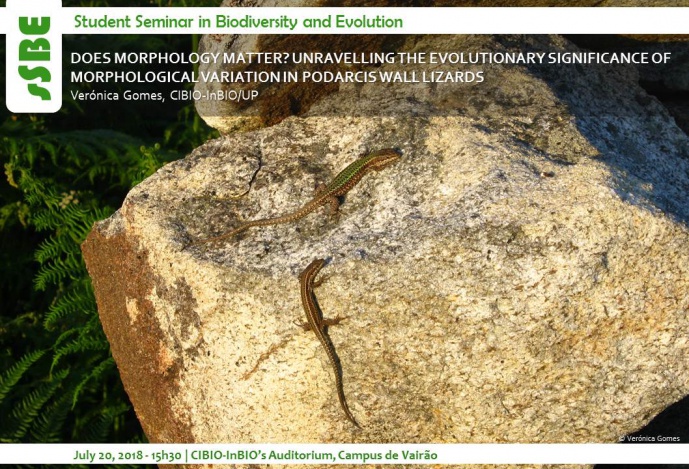DOES MORPHOLOGY MATTER? UNRAVELLING THE EVOLUTIONARY SIGNIFICANCE OF MORPHOLOGICAL VARIATION IN PODARCIS WALL LIZARDS

STUDENT SEMINAR IN BIODIVERSITY AND EVOLUTION

How do performance, behaviour, and ecology drive phenotypic diversity? Despite numerous interspecific studies identified a relationship between morphology and ecology, we still lack an understanding of how selection moulds morphology-performance-behaviour associations at the intraspecific level. Studies with species exhibiting high levels of phenotypic variability, as Podarcis wall lizards, are relevant for identifying the microevolutionary mechanisms underlying variation in functional performance and that may, in turn, affect fitness. Lizards provide excellent models for analysing morphology-performance associations in light of the ecomorphological paradigm, as their phenotypic traits are easily quantified. This project aimed to study the interplay between morphology, performance, and environmental variation in a functional morphology framework, using Podarcis sp. as a model. We quantified locomotor and bite performance and examined their relationship with morphology, also considering habitat use. Surprisingly, we did not detect a link between morphology and locomotion between populations of the same species, nor when examining co-existing, closely related species. However, locomotion varied substantially within species, suggesting a very fast evolutionary response to habitat type. In the context of these studies, we established that the method used for speed quantification influences the quality of performance descriptors, which can affect our capacity of detecting variation in performance. In terms of bite performance, we detected an association with head morphology and differences between animals from different habitats even at the intraspecific level. However, sexual differentiation was the main factor driving variation in head functional morphology, where male bite performance was unaffected by variations in head dimensions and shape caused as a response to habitat type variation. Indeed, bite performance is highlighted as a trait of major importance in both ecological and social tasks. Interestingly, different bite-performance functions (i.e. duration and maximal capacity) are optimized through different sets of head traits, which yields a morphological trade-off between them. Put together, our results shed more light on the complex interactions between different selective mechanisms, and sometimes confirm while other contradict the ecomorphological paradigm.
Verónica Gomes holds a MSc in Biodiversity, Genetics and Evolution from the Faculty of Sciences of the University of Porto. Verónica is currently in the end of her fourth year of the BIODIV PhD Program, working under the supervision of Dra. Antigoni Kaliontzopoulou (CIBIO-InBIO) and Dr. Miguel A. Carretero (CIBIO-InBIO), and is part of the Phenotypic Evolution (PHENEVOL) and Functional Biodiversity (FBIO) groups at CIBIO-InBIO.
[Host: Antigoni Kaliontzopoulou, Phenotypic Evolution]
Image credits: Verónica Gomes